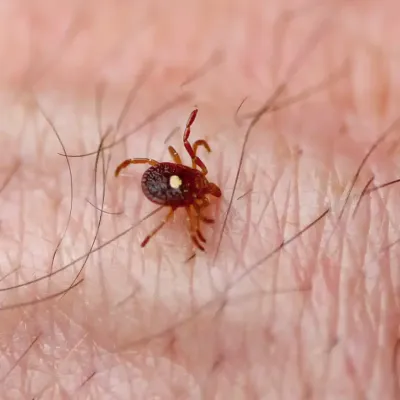About Lone Star Ticks

Appearance: Reddish-brown in color, becoming slate-gray when engorged; very round with prominent festoons; females have a white dot on their dorsal shield; males are smaller than females who are 1/6 – 1/4 inch in length,1/2 inch in length when engorged
Region: Entire eastern United States to Texas and Iowa, as far north as Maine
Diet: Lone star ticks feed on the blood of domesticated and wild animals as well as humans.
Habitat: Lone star ticks are commonly found in woodland and forested areas in thick undergrowth and where white-tailed deer populate.
Threats: Human monocytic ehrlichiosis and tularemia are two of the most common diseases transmitted by lone star ticks. A lone star tick bite can cause a circular rash called southern tick-associated rash illness (STARI) which is similar to the rash of early Lyme disease. The exact cause has not been officially determined, but studies show this species of tick is unable to transmit the bacteria that causes Lyme disease to a host. Lone star ticks are a species that tend to be aggressive and actively seek out a host.
Control: Wearing long sleeve shirts and pants, applying repellent, and performing tick examinations after outdoor activities are all preventative measures. Being aware of your surroundings and the locations where these ticks are commonly found is also important as well as keeping your yard maintained and grass trimmed low.
